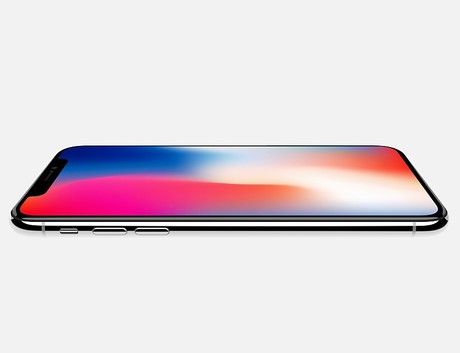Apple unveils three new iPhones, Apple Watch 3

Apple has, as expected, unveiled the next devices in its iPhone smartphone line, including its newest flagship, the 10th-anniversary iPhone X.
The iPhone X abolishes the home button to expand the 5.8″ display across the entire face of the device, except for a thin strip to accommodate the front-facing camera and speaker. The functionality of the home button will instead be replaced by gesture control.
The device incorporates face recognition to unlock the device and authorise payments. The face recognition function uses a dot projector, infrared camera and flood illuminator to project more than 30,000 invisible IR dots and create a mathematical model of a user’s face to confirm a match.
Apple said the system is capable of adapting to changes in appearance over time, and preventing spoofing from using photos or masks. Face ID is designed to only unlock a device when customers are looking at it.
The iPhone X also has the requisite performance and hardware improvements, with a new six-core A11 Bionic CPU.
But much of the initial coverage of the device has focused on the eyebrow-raising recommended sale price. In Australia, an unlocked iPhone X will cost $1579 for the entry-level 64 GB device. It remains to be seen whether the hardware improvements will justify the high price in the eyes of consumers.
The cost makes the iPhone X the most expensive Apple smartphone to date. In the US the device will cost US$999 ($1245), which compares to a launch price of US$649 for the entry-level iPhone 7 and US$769 for the iPhone 7 Plus, and US$499 to US$599 for the original iPhone back in 2007.
For comparison's sake, in Australia the entry-level iPhone 7 launched at $1079 and the iPhone 7 Plus at $1269.
Loizos Heracleous, Professor of Strategy at Warwick Business School, said Apple’s introduction of a US$1000 iPhone is consistent with its strategy of targeting the higher end of the market rather than aiming for a larger base of users.
“Given that the iPhone accounts for the majority of the company’s revenues and profits and its demand curve is relatively inelastic — ie, a price change has less effect on sales — this pricing strategy makes sense in terms of revenue and profit growth,” he said.
“This move is also consistent with Apple’s image in important emerging economies as an exclusive handset and as the real thing, despite the availability of much cheaper imitations. While it may constrain rapid expansion of users, it strengthens the brand’s image and desirability as the mobile most people will buy when they are able to.”
For more cost-conscious consumers, Apple has also announced the new iPhone 8, which starts at a more reasonable price of $1079 in Australia (US$699 in the US) and the iPhone 8 Plus, which starts at $1229 (US$799 in the US).
These devices keep the A11 Bionic Chip but lose the full-face screen — instead coming with a 4.7″ and 5.5″ Retina HD display respectively — and the face recognition functionality.
The iPhone 8 and iPhone 8 Plus have been designed to provide a robust augmented reality (AR) experience, with individually calibrated cameras, new gyroscopes and accelerometers for accurate motion tracking and the processing power to support world tracking, scene resolution and 60 fps high-resolution graphics.
Pre-orders of the iPhone 8 and iPhone 8 Plus will commence in Australia and many other markets on Friday, while pre-orders of the iPhone X will commence on 27 October.
As well as the new iPhones, Apple has also unveiled its new Apple Watch Series 3, adding built-in LTE and UMTS cellular capability to finally allow users to make and receive calls or text without an iPhone nearby.
The Apple Watch Series 3 actually comes in two models, one with and one without cellular capability. Both models incorporate GPS and the new watchOS 4 operating system, which incorporates more fitness tracking functionality and a redesigned music app.
At launch, the Apple Watch Series 3 will be available through all three major mobile operators with the cellular model starting at US$499 and the GPS-only model starting at US$459. Price will depend on the size and metal finish selected.
Finally, Apple has announced a new variation of is Apple TV supporting 4K and high-dynamic range video. The Apple TV 4K is built on the same A10X Fusion chip that powers the iPad Pro and is capable of automatically detecting a 4K TV’s capabilities and optimising set-up for the optimal picture quality.
In Australia, the Apple TV 4K will start at $249 for the 32 GB version. Pre-orders will commence on Friday and the device will be available from 22 September.
IoT demands alternatives as 3G sunset looms
The impending 3G shutdown is a daunting prospect for organisations across ANZ that rely on...
Broadband measurement shows online gaming stacks up
The ACCC's latest Measuring Broadband Australia report has found that consumer connections to...
BlackBerry stopping one cyber attack per minute
A new report from BlackBerry's Threat Research and Intelligence team highlights the...




